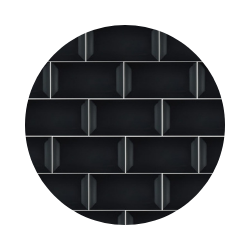
blog, walls
Subway tiles have become increasingly popular over the years, with these now being a top interior trend in 2022. Let’s take an in-depth look at what makes a subway tile a subway tile, and look at some creative ways these can be installed. We will also establish where these tiles are most commonly used.
First, we need to understand what exactly a subway tile is. The term “subway tile” typically refers to rectangular tiles (usually 3 x 6 inches). Made of ceramic, subway tiles are known for both their durability and their timeless style.
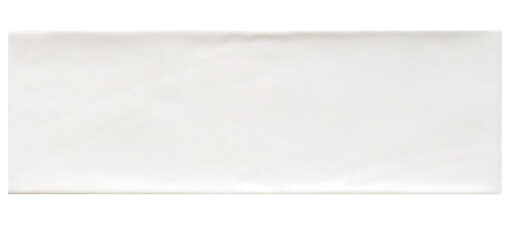
Above: bulevar white brillo ceramic wall tile
You might be wondering, why are subway tiles called subway tiles?
They were first used in New York subway stations in 1904, where designers were tasked with designing a surface that was low maintenance, bright, easy to clean, stain resistant and bacteria resistant. Additionally, the white and glossy design of the first subway tiles formed a highly reflective surface that helped create a safe, sanitary feeling for passengers.

Now that we have established some general characteristics of subway tiles, let’s move on to the more exciting stuff! A key feature of modern subway tiles are the pushing of boundaries to find unique new ways to showcase their design. Often, this means altering the layout pattern.
Here are some creative ways to install subway tiles:
Vertically Offset Subway Tiles
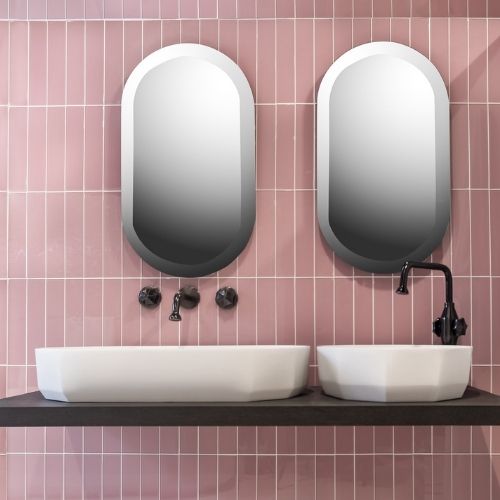
Above: Pink Vogue Glass Subway Tiles
By turning your subway tile on its side to create a vertically offset or stacked pattern, elongates a backsplash or wall and draws the eye upward.
Subway Tile in a Herringbone Pattern

Above: Lacche Curcuma Ceramic
Herringbone subway tile adds a sense of movement and can be laid at different angles to different effects. Laying herringbone tile may be slightly more complicated than laying a traditional offset pattern, however the results are worth the effort.
Subway Tile in a Diagonal Basket Herringbone Pattern
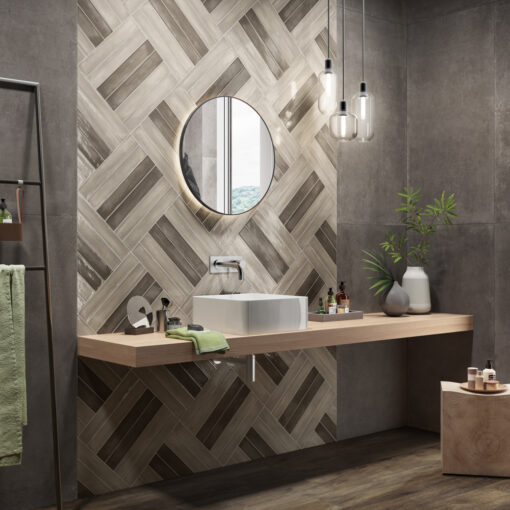
Above: Lacche Bruno Ceramic
You can also lay your subway tiles in a diagonal basket herringbone pattern, to create an interesting and stylish appearance. This is great for a feature wall or to create a trendy backdrop.
Change The Colour!
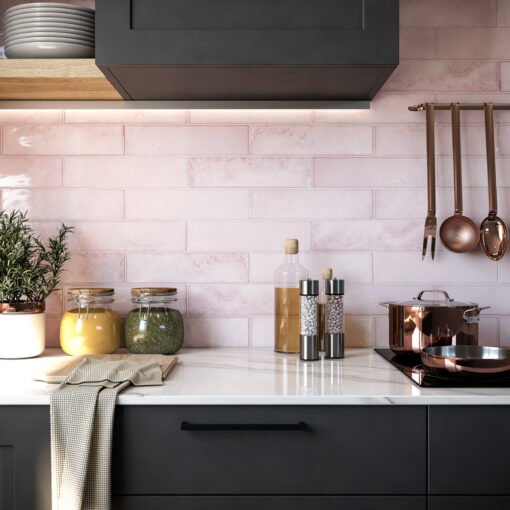
Above: Drop Pink Ceramic White Tile
Using colorful subway tiles can give your design a fun and modern twist. No colour is off the table!
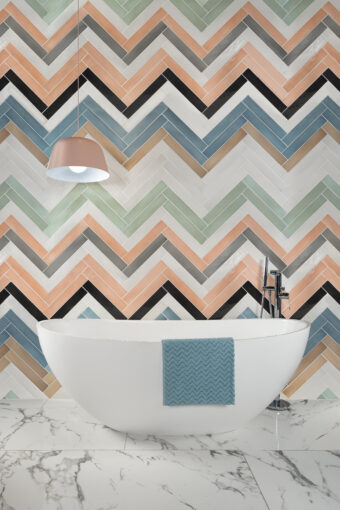
Above: Manacor Subway Ceramic Tile in multiple colours
If you can’t choose just one color for your subway tile, multi-colour subway tiles are for you! One trend is to sprinkle tiles of a different colour into your subway tile design in a random fashion, giving you a unique look, like the one pictured above.
Change The Dimensions
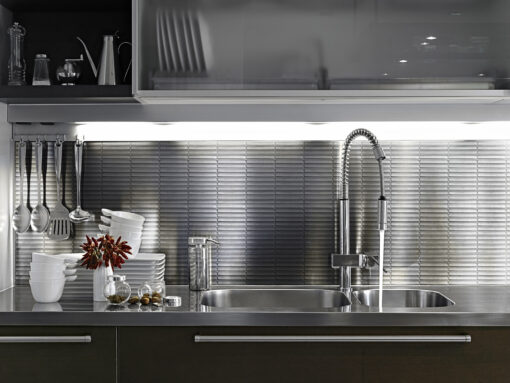
Above: autumn fairy speckled charcoal kit-kat tiles
Subway tile is typically 3 x 6 inches, but this backsplash proves that’s not a hard and fast rule. In a thinner and elongated size, we like to call these kit kat tiles.
Colour The Lines
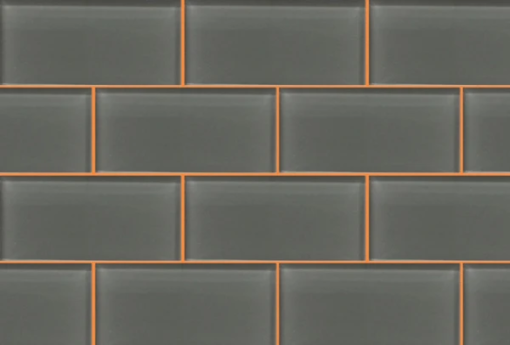
We commonly see subway tile with white, gray, or black grout, but choosing colorful grout is a great way to make your subway tiles stand out. Subway tiles with coloured grout draws attention to the tile layout pattern, whereas subway tile with matching grout creates a more seamless design.
Where subway tiles are most commonly used:
Subway Tile Backsplashes

Above: Lacche Ghiaccio Ceramic
Subway Tile Feature Walls
Feature walls can show off your subway tiles. This living space opts for a bright design, with our lacche salvia ceramic tiles, matched perfectly with an emerald pallet.
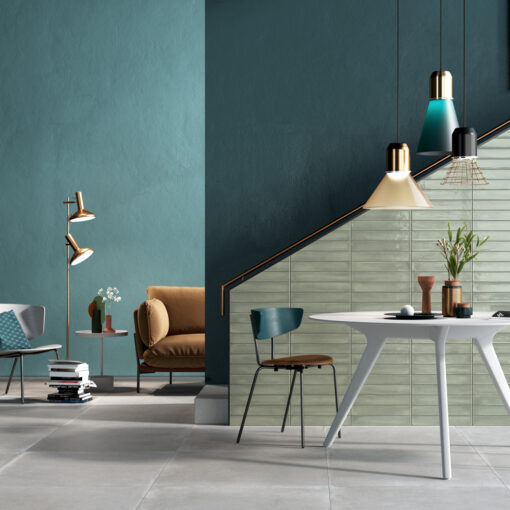
Above: Lacche Salvia Ceramic
Subway Tile Fireplace Surrounds

Fireplace surrounds can benefit from subway tiles as well. Ceramic tiles are flame-resistant, so you needn’t worry about heat harming your tiles.
Subway Tile Showers
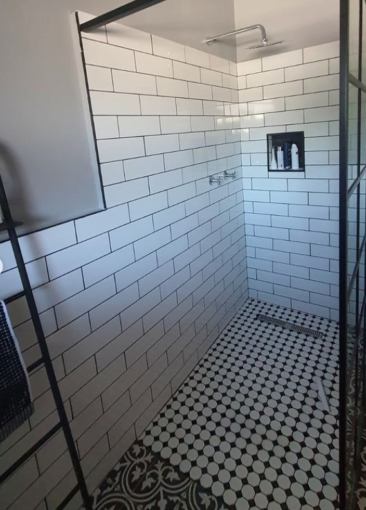
Above: Client bathroom using our essence white gloss ceramic wall tile
Subway tiles are a popular choice for showers. As mentioned above, these are water and stain resistant, easy to clean and durable.
Now it is easy to see why subway tiles are such a popular choice for interiors today, how they have endured over the years, and why they’re still used today.
Visit one of our showrooms for expert advise on subway tiles and follow us on our socials for even more creative subway tile designs to admire.

blog, commercial blog, floors, walls
Choosing the size of the tiles for residential space is a critical design decision since it affects how large the room is perceived to be as well as setting the mood of the place… cozy, cool, spacious, and busy? If your customer has a small space or a large space, what are the best sizes to choose from? Should you advise smaller tiles to marry with the size of a tiny space? Will large tiles automatically make things look larger? It’s not entirely cut and dried but it depends upon your circumstances and the room itself.
While it will certainly help in deciding by offering samples, sometimes it’s difficult for a customer to picture exactly what those tiles will look like in the home. The amount of natural light, the location of their fixtures and fittings, ceiling heights, and available wall space- all play a role in how the finished space will look. It’s generally good advice to purchase tiles of a size relative to the amount of space. So, a really large area, say an open plan kitchen or dining room, can probably handle really large format tiles or planks which will lengthen the room in the direction of the planks (like the image above). If it’s a medium size bathroom, a medium-sized tile will generally be suitable. The tiniest of guest bathrooms may look best with smaller, even mosaic-style tiles.

Right: adagio light grey porcelain
However, one thing to bear in mind is grout lines, as these will make an impact on the final result and whether the space will look smaller or larger. The more grout lines you have, the busier your wall or floor will look and this may tend to make a smaller space look even more restricted. It may be good to go with a medium-sized tile instead to reduce that grid-like appearance that results from grout lines and give the illusion of a larger space.
On the other hand, a smaller bathroom, for instance, might have some difficult angles which means, practically speaking, a larger tile is going to need more cuts to fit around those items. If the toilet is located quite close to the shower, for instance, those tiles running along both may require more work than using a smaller tile that will fit better around them.
One thing that will make a room look larger is to use a grout color that is similar to the color of the tiles. This will then make that grid appear less noticeable and the tiles will look more seamless.
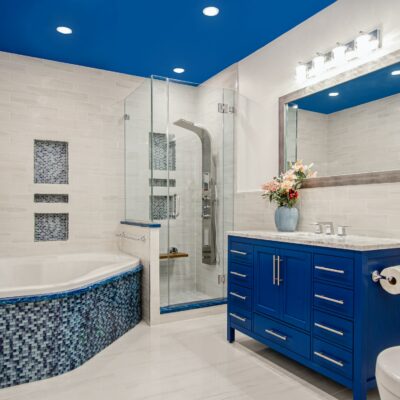 One area you can usually get away with smaller tiles is inside a shower cubicle. More grout lines mean better traction and less slipping, so choosing a small or mosaic tile for this area with a larger tile in the rest of the space is a good idea.
One area you can usually get away with smaller tiles is inside a shower cubicle. More grout lines mean better traction and less slipping, so choosing a small or mosaic tile for this area with a larger tile in the rest of the space is a good idea.
Left: brick glass mosaic
Whatever your project requires, our knowledgeable Tiletoria sales team are eager to assist you. Please contact your closest showroom to find the perfect size tiles for your renovation.

blog, floors, walls
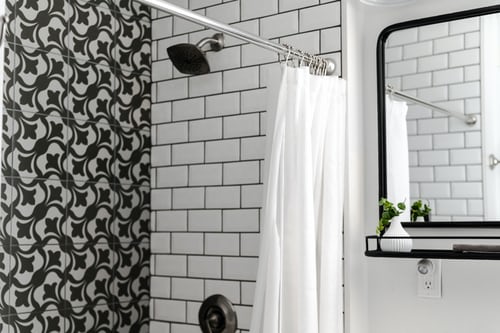
With the world becoming increasingly health conscious and equipped against germs, it’s important to consider all potentially harmful factors in your home to protect your family. Naturally, your flooring selection makes up a large portion of it. Rest assured, tiles are one of the most hygienic surfaces you could find!
Tiles are glass-like/ vitreous floors, making them an ideal wall and floor covering for places such as hospitals and commercial kitchens. They have a very low water absorption and are almost completely waterproof unlike other surfaces such as carpets, wood and even concrete. Naturally, water can contain viruses, bacteria, fungi, etc. The glass-like surface means virtually nothing can penetrate the surface and the low absorption rate means tiles do not absorb water, even from underneath.
Therefore, from a hygiene perspective, porcelain tiles (less than 0,5% water absorption) followed by glazed ceramic tiles (less than 3%) are the best. The key advantage of tiles is that they are quick and easy to clean as they can simply be disinfected and can withstand chemical and acids or alkalis. If you need advice on what to use to clean your tiles, check out our blog article called How To Clean Your Tiles.
The weak point, however, is in the tile grouting. Grout is more porous than tiles and is the inevitable starting point for fungal growth in particular. Grout, therefore, requires special attention; the fewer grout lines, the better. For this reason, large format tiles have become increasing popular as they require smaller grout lines.
A large format tile is considered to be square or rectangular in shape with the length of at least one edge greater than 600mm (nominal) or a facial area greater than 3500cm² (nominal). You can check out our range of large format tiles on our website. Interior designers love the near-seamless effect this creates, and they’ve made good use of these sophisticated tiles in hotels, restaurants and shopping malls. Sometimes, they use bold and dramatic large format tiles to really make a statement like these unique metallic bronze matt porcelain (600 x 1200 mm) tiles.
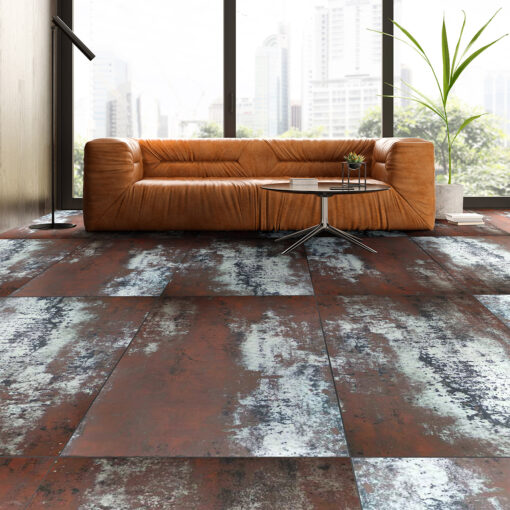
Since bacteria and fungi flourish in warm and wet conditions, bathrooms are particularly prone to these harmful germs. Ensure that wet areas in your home are dried/ ventilated after use to reduce the chances of germs flourishing and being spread.
Pop down to your nearest showroom to shop our range of beautiful porcelain and ceramic tiles.
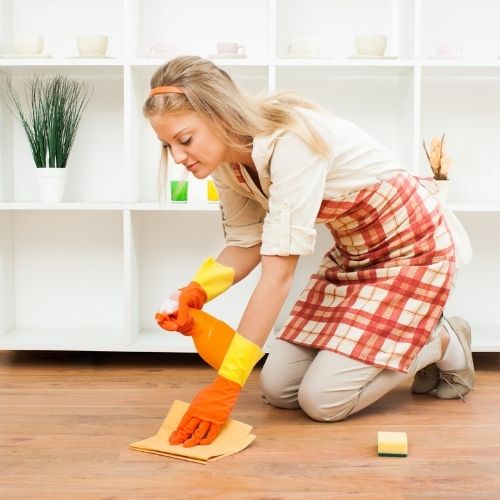
blog, floors, how to articles, walls
How to clean your tiles for long term durability
The tiles you choose to install in your home are an investment and require the necessary care as any other part of your space. Naturally, certain tile materials will require specific kinds of cleaning materials and techniques. Just as you wouldn’t use a scouring pad to wash plastic items, you wouldn’t use certain cleaning materials and detergents on certain tiles. Ideally, your tiles should be cleaned regularly (both wet and dry cleaning), at least once a week to keep your floors looking crisp. From keeping your floors stain-free to your grout looking fresh, here are the best ways to clean different types of tiles.
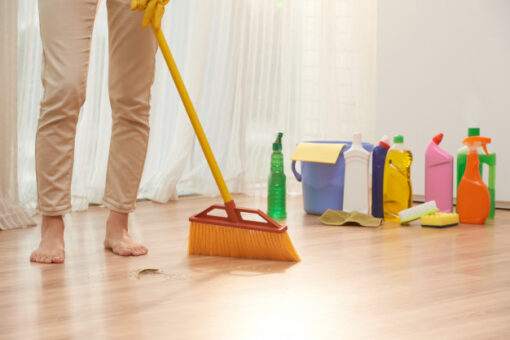
How To Clean Ceramic and Porcelain Tiles
Tiles made from these materials are rather durable and do not require a huge amount of effort to get into tip-top shape.
1. Sweep up any loose dirt and dust: Before doing any type of cleaning or polishing, make sure you’ve got an empty surface to work with. Sweep or vacuum your tiles right before you clean them (naturally, doing this well in advance means dirt and dust will pile up on your floors again). Be wary of the type of vacuum cleaning tool you use to make sure it won’t scratch the surface of your tiles.
2. Choose the correct mop to work with: Clean your tiles with a mild detergent/ floor cleaning agent and opt for a chamois mop over a sponge one as sponge mops tend to push any dirt into the grout lines and make the cleaning process more of a challenge. Make sure your water is swapped out if dirty as dirty water will leave a cloudy film over your tiles.
3. Get rid of any soap residue: If your tiles still have any film or hazy residue on them even after washing, it’s most likely due to the soap or detergent you have been using. A simple way to remove this and keep your tiles looking shiny would be to use fresh lemon juice. This is only appropriate for use on ceramic and porcelain tiles but avoid using it on stone tiles as this could damage them.
4. Spot the stains: Should you encounter any pesky stains whilemopping, give it that area a little more TLC and use the most appropriate cleaner. In this case, using a smaller soft sponge and wiping by hand should be most effective.
5. Dry your tiles: Allowing your floors to air-dry will most likely result in them having water spots from the washing. Dry your tiles with a clean and lint-free cloth straight after washing by dragging it under your foot across them.
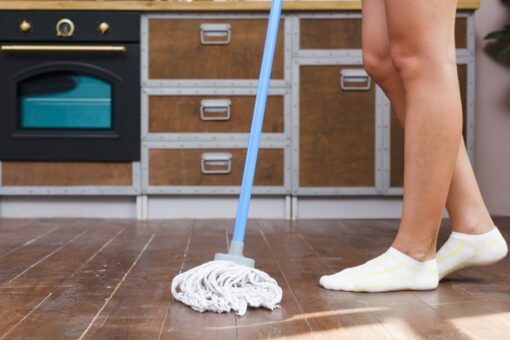
How To Clean Resilient Tile Floors
Resilient tiles are those made from materials like rubber, vinyl and linoleum which generally require less maintenance. Vinyl tiles are one of the easiest kinds to maintain as you can simply sweep or vacuum up any existing dirt without any hard labour required. Avoid using any abrasive cleaning materials on this surface as it will cause damage, simply mop with water and vinegar or a cleaning solution made specifically for vinyl floors.
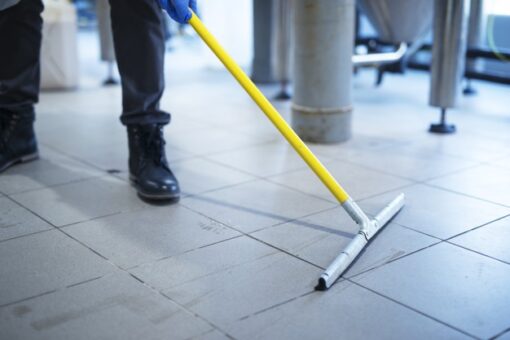
How to Clean Tile Grout
Clean grout makes the biggest difference when it comes to keeping your tiles looking fresh. It easily traps dirt, meaning it doesn’t take much for your tile grout to become crusty. A simple way to keep it looking clean would be to create a quick, easy and inexpensive DIY paste with baking soda and water. Simply rub it into the stained grout, let it settle for a couple of hours then scrub it with a stiff nylon brush, perfect for getting into all the nooks and crannies. You can use a silicone-based grout that’s best applied 10-14 days after the grout it applied to keep the stains away.
If you need advice on how to clean your flooring, our friendly staff are always available to assist you at your nearest Tiletoria showroom.

blog, floors, walls
When purchasing tiles for your space, it’s advisable to always account for an extra 10% in the event of any future uses. There are many reasons you could need a replacement tiles such as cracks and discoloration, and unfortunately certain tiles stop being produced and you’ll have to find a suitable substitute if you wish to renew your tile/s.

Finding the best match for your existing tiles can be tricky, but with the following tips, you’ll be one step closer to making your space feel complete again.
1. Check your storage for extra tiles
When initially purchasing your tiles, you were most likely advised to get an extra 10%, so have a look around your home/ your storage areas for any extra tiles you may have forgotten. Places like your garage, tool-shed or even behind large appliances and cabinets are your best bet. The spars may have just been left behind by the tiler/ person who DIY-installed.
2. Get a sample piece matched
If you don’t have any luck finding spares of your original tiles, your next best option would be to take a sample of your tile to your local storeroom and have a salesperson check if there are any leftovers of the range or if there is another tile that would be a good match.
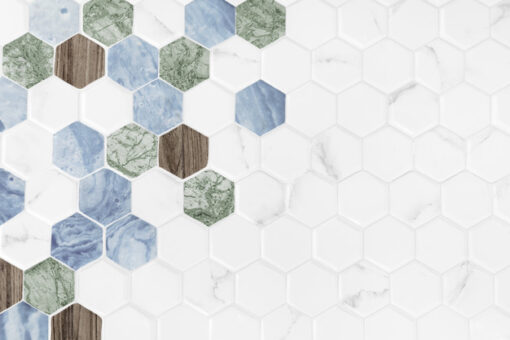
3. Scan the internet
If you have any information about the tile manufacturer or design number, do a little digging on the internet to see if you get your hands on some of the discontinued tiles. You never know what you might find.
4. Repurpose your existing tiles
If all of the other options don’t work out for you, try removing tiles from under permanent fixtures such as fridges, large cabinets, dishwashers, etc. where possible. If they can be carefully removed, it may be worth adding them to more visible spots where your tile has cracked.
Need to replace a discontinued tile? Visit your nearest Tiletoria showroom and one of our friendly sales assistants will help you along the way.
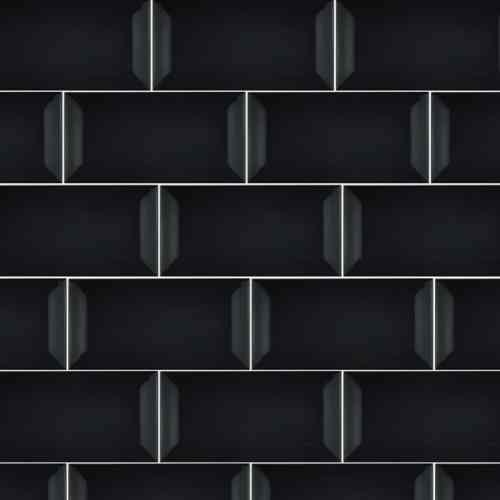
blog, floors, walls
With a wide selection to choose from, it’s natural to feel a bit intimidated or overwhelmed when purchasing tiles for your home. Since this can become such a high-involvement purchase, here are some factors to consider to help you along the way.
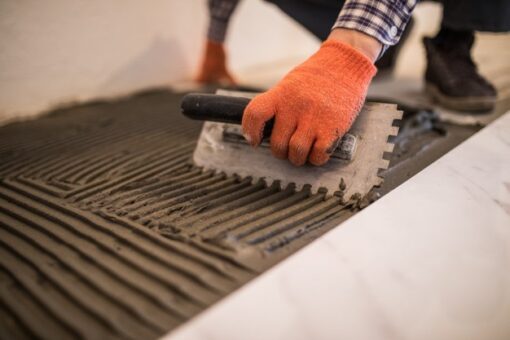
1. Indoor or Outdoor use
Before looking at your different options for tiles, you need to determine whether it will be installed indoors or outdoors. This is important as tiles for exterior spaces need to meet certain safety regulations such as being slip and thermal shock resistant. The selection is also dependent on the type of outdoor area i.e., whether you have a pool, lawn, etc. Generally, outdoor tiling requirements have a slip resistance coefficient greater than 0.4 when wet. This is often expressed as an R rating and a ratio of R11 or more is recommended for poolside’s. Popular outdoor tiling mimics the textures of natural stone and are not monolithic.
Indoor tiling doesn’t require as many considerations as outdoor tiling. You can choose indoor tiling purely based on aesthetics. It is, however, important to note that not all tiles can be used for flooring purposes as floors need to be able to withstand continuous stress, abrasion and chemicals.
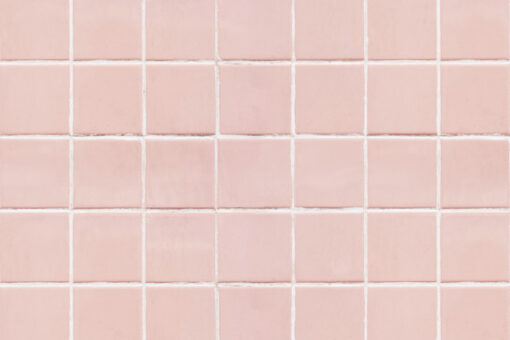
2. Tile Size
In order to determine the size of the tiles you purchase, the design of the space needs to be considered. Larger-scale tiles can be more modern, impactful and make a smaller space seem bigger. For a more traditionally-styled space, opt for smaller-scale tiles.
Large tiles with the dimensions 90 x 90 cm or 120 x 60 cm sizes are increasingly popular. Their installation requires less effort, and they are great for tiling both walls and floors.
Regardless of the size of the tile, it is advisable to purchase at least 10% more than necessary in case of breakage and cutting during the project. It is also good to have any spares for future use.
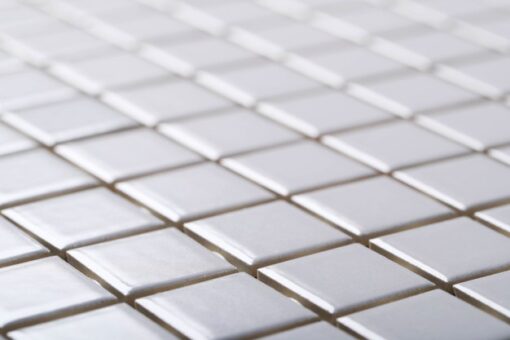
3. The Finish
With many different finishes to choose from, you need to find one that best suits your style, including polished, matt, metallic, satin, etc. Naturally, different finishes are made from different materials and require different levels of maintenance. Some are more slip-resistant, durable and easier to clean than others. While making choices based on how aesthetically pleasing certain tiles are, it is important to take all these factors into consideration.
Need more advice on what tiles you want to fill your home with? Visit your nearest Tiletoria store and our sales representatives will be more than happy to advise you on which tiles they think will be best suited to your application.


